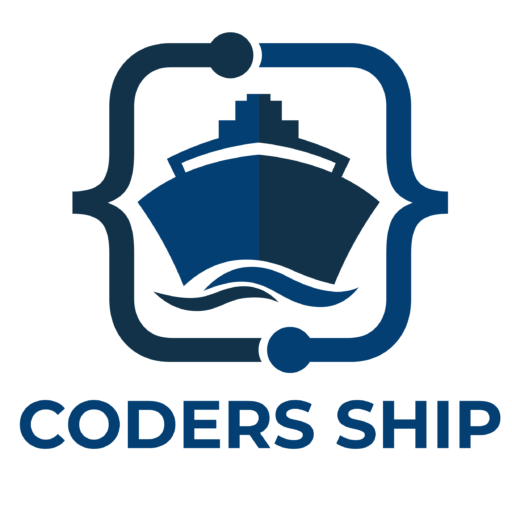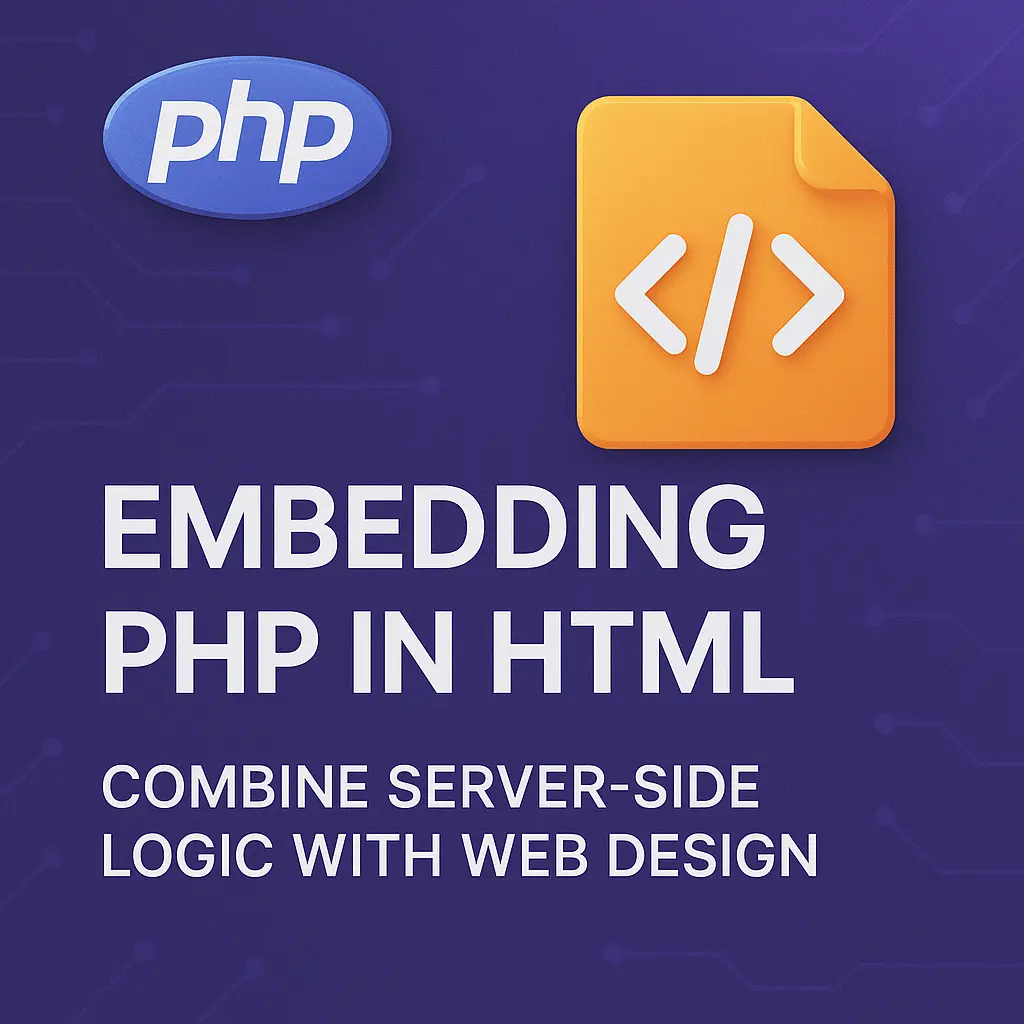In this comprehensive guide, we’ll explore how to seamlessly integrate PHP with HTML to create dynamic and interactive web applications. From the basics of PHP and HTML integration to advanced techniques, we’ll cover everything you need to know to harness the full potential of these technologies.
Basics of PHP and HTML Integration
Integrating PHP with HTML involves embedding PHP code within HTML documents to generate dynamic content. PHP code is enclosed within special delimiters (<?php … ?>), allowing it to be executed on the server before the HTML is sent to the client’s browser.
Basic Example
<!DOCTYPE html>
<html lang="en">
<head>
<meta charset="UTF-8">
<meta name="viewport" content="width=device-width, initial-scale=1.0">
<title>PHP and HTML Integration</title>
</head>
<body>
<h1>Welcome, <?php echo "John"; ?>!</h1>
<script>var rocket_lcp_data = {"ajax_url":"https:\/\/codersship.com\/wp-admin\/admin-ajax.php","nonce":"b6a33ec5d4","url":"https:\/\/codersship.com\/php\/embedding-php-in-html","is_mobile":false,"elements":"img, video, picture, p, main, div, li, svg","width_threshold":1600,"height_threshold":700,"debug":null}</script><script data-name="wpr-lcp-beacon" src='https://codersship.com/wp-content/plugins/wp-rocket/assets/js/lcp-beacon.min.js' async></script></body>
</html>
In this example, we embed PHP code within an HTML document to dynamically generate a personalized greeting message. The PHP code <?php echo “John”; ?> outputs the text “John” within the <h1> heading element.
Using PHP Variables
PHP variables can be used to store and manipulate data, which can then be echoed within HTML elements to dynamically populate content.
<?php
$name = "Jane";
?>
<!DOCTYPE html>
<html lang="en">
<head>
<meta charset="UTF-8">
<meta name="viewport" content="width=device-width, initial-scale=1.0">
<title>PHP Variables in HTML</title>
</head>
<body>
<h1>Welcome, <?php echo $name; ?>!</h1>
<script>var rocket_lcp_data = {"ajax_url":"https:\/\/codersship.com\/wp-admin\/admin-ajax.php","nonce":"b6a33ec5d4","url":"https:\/\/codersship.com\/php\/embedding-php-in-html","is_mobile":false,"elements":"img, video, picture, p, main, div, li, svg","width_threshold":1600,"height_threshold":700,"debug":null}</script><script data-name="wpr-lcp-beacon" src='https://codersship.com/wp-content/plugins/wp-rocket/assets/js/lcp-beacon.min.js' async></script></body>
</html>
In this example, we define a PHP variable $name with the value “Jane” and dynamically insert its value into the greeting message.
Advanced PHP and HTML Integration Techniques
Beyond basic PHP and HTML integration, several advanced techniques can enhance the flexibility and functionality of your web applications.
Using Control Structures
PHP control structures such as if, else, foreach, and while can be used to conditionally display content or iterate over arrays when generating HTML output.
<?php
$loggedIn = true;
$colors = array("red", "green", "blue");
?>
<!DOCTYPE html>
<html lang="en">
<head>
<meta charset="UTF-8">
<meta name="viewport" content="width=device-width, initial-scale=1.0">
<title>PHP Control Structures in HTML</title>
</head>
<body>
<?php if ($loggedIn): ?>
<h1>Welcome back!</h1>
<?php else: ?>
<h1>Please log in to continue</h1>
<?php endif; ?>
<ul>
<?php foreach ($colors as $color): ?>
<li><?php echo $color; ?></li>
<?php endforeach; ?>
</ul>
<script>var rocket_lcp_data = {"ajax_url":"https:\/\/codersship.com\/wp-admin\/admin-ajax.php","nonce":"b6a33ec5d4","url":"https:\/\/codersship.com\/php\/embedding-php-in-html","is_mobile":false,"elements":"img, video, picture, p, main, div, li, svg","width_threshold":1600,"height_threshold":700,"debug":null}</script><script data-name="wpr-lcp-beacon" src='https://codersship.com/wp-content/plugins/wp-rocket/assets/js/lcp-beacon.min.js' async></script></body>
</html>
In this example, we use if and foreach control structures to conditionally display a welcome message based on the value of the $loggedIn variable and iterate over the $colors array to generate a list of colors.
Separating Logic and Presentation with Template Files
To maintain clean and organized code, you can separate PHP logic from HTML presentation by using template files. PHP logic is contained within separate PHP files, while HTML templates contain placeholders that are dynamically replaced with data generated by PHP.
<!-- template.php -->
<!DOCTYPE html>
<html lang="en">
<head>
<meta charset="UTF-8">
<meta name="viewport" content="width=device-width, initial-scale=1.0">
<title><?php echo $pageTitle; ?></title>
</head>
<body>
<h1><?php echo $heading; ?></h1>
<script>var rocket_lcp_data = {"ajax_url":"https:\/\/codersship.com\/wp-admin\/admin-ajax.php","nonce":"b6a33ec5d4","url":"https:\/\/codersship.com\/php\/embedding-php-in-html","is_mobile":false,"elements":"img, video, picture, p, main, div, li, svg","width_threshold":1600,"height_threshold":700,"debug":null}</script><script data-name="wpr-lcp-beacon" src='https://codersship.com/wp-content/plugins/wp-rocket/assets/js/lcp-beacon.min.js' async></script></body>
</html>
<?php
// page.php
$pageTitle = "Dynamic Page Title";
$heading = "Welcome to my website!";
include "template.php";
?>
In this example, the page.php file includes the template.php file and dynamically populates the $pageTitle and $heading variables, which are then used to generate the HTML output.
Best Practices
Separation of Concerns: Separate PHP logic from HTML presentation to improve code readability and maintainability.
Sanitize Output: Always sanitize user input and output to prevent security vulnerabilities such as cross-site scripting (XSS) attacks.
Use Short Tags with Caution: Avoid using short tags (<?= … ?>) as they may not be enabled in all PHP configurations.
Conclusion
Integrating PHP with HTML allows developers to create dynamic and interactive web applications that respond to user input and display dynamic content. In this guide, we explored the basics of PHP and HTML integration, including embedding PHP code within HTML documents and using PHP variables to generate dynamic content. We also discussed advanced techniques such as using control structures and separating logic and presentation with template files. By mastering these techniques and following best practices, you can build powerful and flexible web applications that meet the needs of your users effectively.
<?php
// Example PHP code demonstrating PHP and HTML integration
$name = "John";
?>
<!DOCTYPE html>
<html lang="en">
<head>
<meta charset="UTF-8">
<meta name="viewport" content="width=device-width, initial-scale=1.0">
<title>PHP and HTML Integration</title>
</head>
<body>
<h1>Welcome, <?php echo $name; ?>!</h1>
<script>var rocket_lcp_data = {"ajax_url":"https:\/\/codersship.com\/wp-admin\/admin-ajax.php","nonce":"b6a33ec5d4","url":"https:\/\/codersship.com\/php\/embedding-php-in-html","is_mobile":false,"elements":"img, video, picture, p, main, div, li, svg","width_threshold":1600,"height_threshold":700,"debug":null}</script><script data-name="wpr-lcp-beacon" src='https://codersship.com/wp-content/plugins/wp-rocket/assets/js/lcp-beacon.min.js' async></script></body>
</html>
This PHP script dynamically generates a personalized greeting message using the $name variable within an HTML document. The greeting message varies based on the value assigned to the $name variable.






